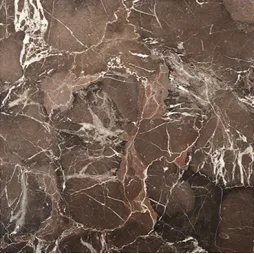Does Marble Soak Up Water? What Happens When Marble Absorbs Water?
Feb. 18, 2024
Marble, with its elegant appearance and versatility, is a popular choice for various applications, from countertops to sculptures. One common concern among homeowners and designers is its interaction with water. In this article, we delve into the relationship between marble and water, addressing the questions: Does marble soak up water? And what happens when marble absorbs water?
Composition of Marble
Marble is a metamorphic rock primarily composed of recrystallized carbonate minerals, typically calcite or dolomite. These minerals undergo intense heat and pressure deep within the earth's crust, resulting in the formation of marble. Its unique composition gives marble its distinctive veining and range of colors, making it prized for its aesthetic appeal.
Porosity of Marble
One key characteristic of marble is its porosity, which refers to the presence of tiny pores and cavities within the stone. The porosity of marble can vary depending on factors such as the type of marble and its geological history. Generally, marble is considered moderately porous, meaning it can absorb liquids to some extent.
Does Marble Soak Up Water?
Yes, marble does soak up water, albeit at different rates depending on its porosity and surface finish. When exposed to water, especially for prolonged periods, marble can absorb moisture through its pores. This can lead to several consequences, both aesthetic and structural, which we will explore next.
What Happens When Marble Absorbs Water?
When marble absorbs water, several effects may occur. Firstly, water absorption can cause the marble to darken or develop water stains, particularly in areas with high mineral content in the water. These stains can be challenging to remove and may require professional cleaning methods.
Moreover, repeated exposure to water can contribute to the deterioration of the marble's surface over time. Water absorbed into the stone can weaken its structure, leading to issues such as cracking, spalling, or efflorescence. Efflorescence occurs when dissolved minerals from the water migrate to the surface of the marble, leaving behind unsightly white deposits.
Protection and Maintenance
To mitigate the effects of water absorption and preserve the beauty of marble surfaces, proper protection and maintenance are essential. Sealing the marble with a quality impregnating sealer can help reduce its porosity and make it more resistant to water penetration. Additionally, wiping up spills promptly and using coasters or mats under liquid-containing items can prevent water damage.
Regular cleaning with a pH-neutral cleaner specifically formulated for marble can help remove dirt and grime without damaging the stone. Avoid using acidic or abrasive cleaners, as they can etch the surface of the marble and exacerbate water-related issues.
Real-life Examples
Marble's ability to withstand moisture makes it a popular choice for various applications in real-life settings. In kitchens and bathrooms, marble countertops and tiles add a touch of luxury while offering durability and water resistance when properly maintained. In outdoor spaces, such as patios and pool surrounds, marble pavers create an elegant ambiance despite exposure to the elements.
Conclusion
In conclusion, marble does soak up water, and this interaction can have significant implications for its appearance and longevity. Understanding the relationship between marble and water is crucial for proper maintenance and preservation. By taking proactive measures to protect marble surfaces and address water-related issues promptly, homeowners and designers can enjoy the timeless beauty of marble for years to come.
148
0
0
All Comments (0)
Previous: None
Next: None
If you are interested in sending in a Guest Blogger Submission,welcome to write for us!





Comments